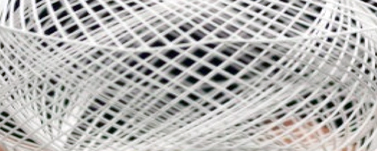With the 3-D printing market for medical devices alone expected to grow to $2.47 billion by 2023 (a CAGR of 18.3%), the Asian region is already seeing a strong rise in investment in medical applications for the technology.
Western 3-D Printing Companies
Among the most active Western players in the Asian region is Materialise, a Belgium-based 3-D printing firm that has made inroads into China, Japan and Singapore. The company entered the Chinese market in June 2015 through a joint venture with Golden Laser, a laser-cutting firm based in Wuhan. The partnership aims to manufacture 3-D-printed medical devices for use in heart surgeries, using Materialise’s i.materialise online 3-D printing platform. At the same time, Materialise began a collaboration with Beijing’s Fuwai Hospital, the largest Class III hospital devoted to cardiovascular disease in the Chinese capital. The company aims to use its 3-D printing software to provide clinical planning tools for cardiovascular specialists.
Materialise has had a presence in Japan since 2003 when it entered into a joint venture with Yokogawa Techno-Information, a Japanese firm that has worked with Materialise on 3D-printed dental implants. It has since expanded its operations in Yokohama. In July 2015, it partnered with Japan’s Medical Dynamic Marketing Company to develop its Total Hip Replacement implants program to plan surgeries in 3-D through Materialise’s system. In November 2016, it announced a partnership with Japan’s HOYA Vision Care Company in Tokyo and Hoet Design Studio to provide optical lens and frames that fit customers’ unique facial features. That same month, Materialise Japan announced the opening of a new medical 3-D printing production facility in Kanagawa to provide surgical guides and anatomical models for orthopedic and craniomaxillofacial surgeries.
In April 2017, Singapore’s Structo, a dental 3-D printing solution provider, launched PrintWorks Pro in cooperation with Materialise. The partnership is expected to improve the 3-D printing workflow through which Structo’s printers are tailored for dental applications.
Hkable Biological 3D, a Chinese-backed New York-based biomedical printing company founded in 2016, has two research centers based in North America and a manufacturing base in Chongqing, China. In China, it is partnering with Shaanxi-based biotechnology company Jintai and in 2017 set up a 3-D medical printing factory, along with a research center, data processing centers, and distribution center. The factory aims to produce medical prostheses in the initial stage and 3-D printed implants and stem cell bioprinting at a later date.
EnvisionTEC, a German 3-D printer manufacturer focused on dental and hearing aid products, partnered in 2015 with DKSH Business Unit Technology, a Swiss marketing company with offices throughout Asia. DKSH is distributing EnvisionTEC’s 3-D printers in Asian countries, including Taiwan, the Philippines, Singapore, Malaysia and Vietnam. EnvisionTEC is headquartered in Michigan and Gladbeck, Germany. In July 2017, China’s Shanghai Man Heng Digital Technology Co., Ltd set up an exclusive dealership agreement with EnvisionTEC to sell its 3-D Bioplotter, used to fabricate hyper-elastic bone, ovary implants, and a placenta model with living tissue to develop new treatments.
Another German firm, EOS, based in Krailling, is a 3-D printer manufacturer that supports medical device and tooling production. In 2015, it set up an overseas office and a technical center in Shanghai, China.
Optomec, an American 3-D printer manufacturer located in Albuquerque, New Mexico, supports metal 3-D medical applications. In 2016, it set up several distribution channels in Asia. In May 2017, Optomec signed a partnership agreement with Japan’s Taiyo Nippon Sanso Corp. (TNSC) in Tokyo, whose U.S.-based subsidiary, Matheson, focuses on medical, specialty and electronic gas equipment.
Asian 3-D Medical Printing Companies
Companies based in Asian countries such as South Korea and Taiwan are also making strides in applying 3-D printing technology to medical uses, helped by government support for the industry.
South Korea’s Ministry of Food and Drug Safety announced in April 2017 that it would launch a new evaluation system, called the New Medical Technology Evaluation Committee. This body is made up of medical doctors with the aim of speeding up the evaluation of 3-D medical printing technology. Medical devices that make use of 3-D printing, such as artificial joints and prosthetics, will be evaluated more effectively and partially funded by the new government scheme. The new system is expected to help lower the price of 3-D-printed devices.
A team led by a professor at Korea Polytechnic University in Seoul has developed a new biodegradable 3-D printing material that it believes will improve facial implant treatments and help avoid complications.
In February 2016, Rokit, a 3-D printing company in Seoul, launched a new 3-D bioprinter that can print human skin tissue. The company entered the medical 3-D printing market with a $3 million grant from the Korean government, in cooperation with the Korea Institute of Machinery and Materials, Seoul National University Hospital, Korea Advanced Institute of Science and Technology, and Hanyang University.
Taiwan’s Industrial Technology Research Institute (ITRI) in Taipei has successfully developed EPiTRI, 3-D-printed bionic skin tissues using Asian skin cells. With opposition growing against animal testing, 3-D prints can enable cosmetic manufacturers or laboratories to conduct chemical tests, such as on skin irritation. In 2016, Taiwan’s National Applied Research Laboratories (NARLabs), located in Taipei, developed 3-D-printed artificial bone materials that are now undergoing clinical trials. NARLabs has set up a medical 3-D printing strategic alliance with three partners: 1) United Orthopedic Corporation, a local orthopedic product manufacturer in Taoyuan, Taiwan, 2) Tontai Group, a metal 3-D printer manufacturer located in Kaohsiung, Taiwan, and 3) China’s ThinTech Materials Technology, a Chinese steel material company, which is a branch of China Steel.
Japanese 3-D Medical Printing Companies
In early 2015, the New Energy and Industrial Technology Development Organization (NEDO), a Kanagawa-based Japanese semi-public body, announced a ¥2.5 billion fund ($22 million) to spur the growth of 3-D printing mechanisms for human tissue regeneration. The areas it is seeking to develop include generating micro-caliber blood vessels through 3-D printers and growing cardiac muscles with stem cell sheets.
Cyfuse Biomedical K.K., a 3-D medical printer manufacturer located in Tokyo, focuses on creating human tissue-like blood vessels. Its 3-D printer, called Regenova, is able to collect cells from patients or donors and turn the spheroids into the shape of a human tissue using the pre-programmed 3-D data on the patient. Since 2016, Regenova has also been installed in the Johns Hopkins University School of Medicine in Baltimore, Maryland, to develop alternative stem cell treatments for heart failure.
J 3D, a Japanese metal 3-D printing startup based in Nagoya, has been developing printed artificial hip joints in cooperation with Nagoya City University since 2016, believing the devices could improve the efficiency of hip replacement procedures.
The Asian region is set to take a leading role in the growth and innovation of 3-D medical printing technology in the coming years. That will provide further investment opportunities for Western companies.







